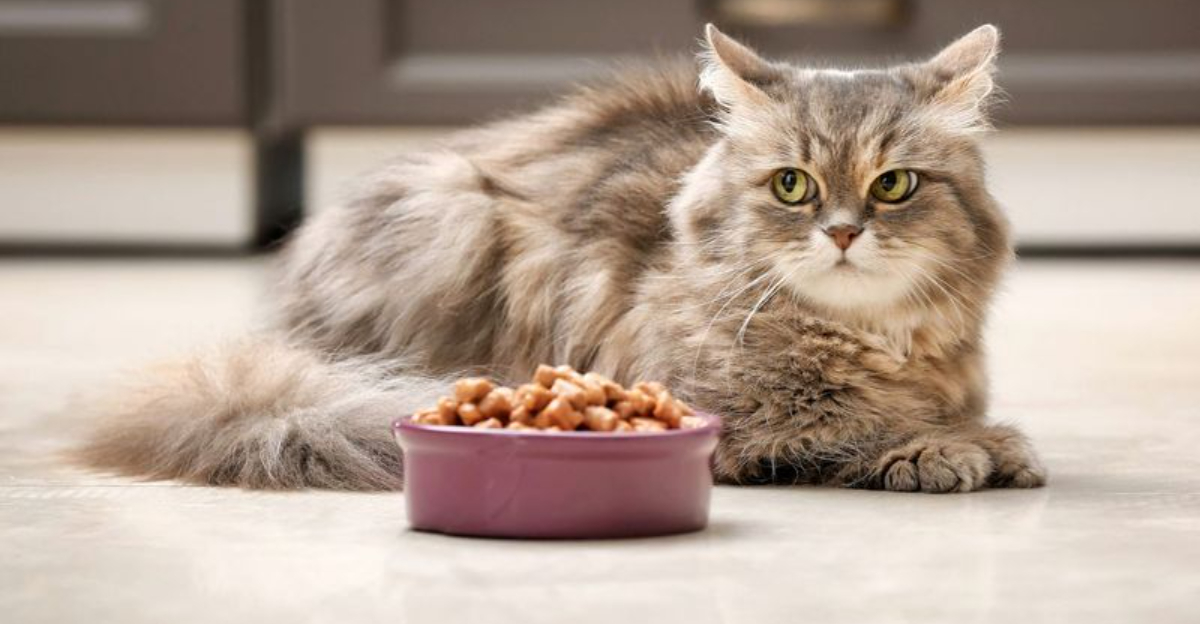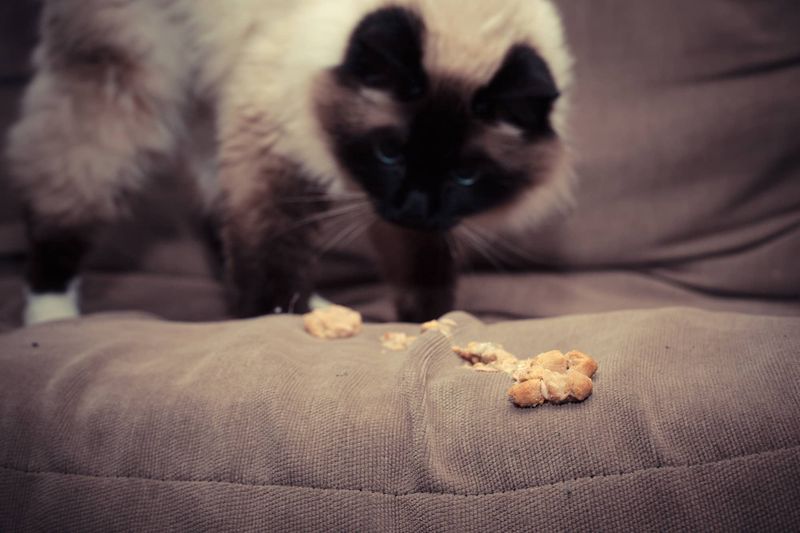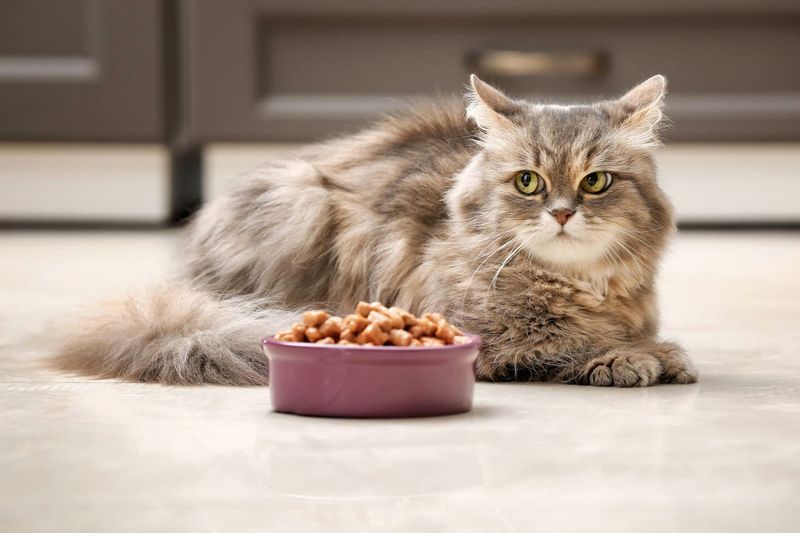📖 Table of Content:
Hairballs are a fairly common nuisance for most cat owners—something you might find on the carpet every few weeks. Because cats are fastidious groomers, swallowing hair is natural, and occasionally expelling it helps clear their digestive tract. But when vomiting becomes more frequent or persistent, it may be a red flag rather than a routine inconvenience.
Too often, chronic vomiting in cats is dismissed as “just hairballs,” allowing potentially serious conditions to go unchecked. Cats tend to mask pain or illness exceptionally well, making subtle symptoms like frequent vomiting easy to overlook. However, what may seem like a grooming byproduct can actually signal a range of health issues, from digestive disorders and food sensitivities to endocrine diseases and organ dysfunction.
Understanding when vomiting moves from a manageable issue to a cause for concern is crucial for your cat’s long-term health. Paying attention to additional signs and patterns in their behavior, appetite, and energy levels can help you catch serious problems early. Below are eight important warning signs that your cat’s vomiting is more than just a hairball issue.
1. Vomiting More Than Once a Week
Frequent vomiting is never something to ignore. While a cat coughing up a hairball every few weeks may not be cause for alarm, weekly or more frequent episodes raise concern. This kind of pattern could suggest gastrointestinal irritation or diseases like inflammatory bowel disease (IBD). Many cat owners get accustomed to the behavior and don’t realize it can point to chronic illness. Inflammatory or structural problems in the digestive tract may provoke a cycle of nausea and vomiting. Repeated vomiting also disrupts nutrient absorption and weakens your cat over time. Getting veterinary input early can prevent long-term damage to their digestive system.
2. Weight Loss
Subtle at first, gradual weight loss in cats who vomit frequently is often missed until it becomes drastic. Unlike dogs, cats don’t usually show visible hunger or discomfort even when they’re sick. This means by the time weight loss is noticeable, the underlying issue could be advanced. Malabsorption from digestive problems or diseases like hyperthyroidism can be culprits. If your cat’s body is not retaining nutrients, it will begin breaking down fat and muscle for energy. This condition can spiral quickly without treatment. Monitoring weight changes monthly is a helpful early warning step.
3. Changes in Appetite
Sudden increases or drops in appetite are always worth investigating, especially when vomiting is also present. A ravenous cat that still loses weight may have a metabolic or hormonal imbalance. Conversely, refusing food or being extremely picky may indicate nausea or discomfort while eating. Chronic vomiting affects a cat’s relationship with food, as they begin to associate meals with stomach distress. You might see them approach food, sniff it, then walk away or vomit soon after eating. Shifts in appetite paired with vomiting often point to conditions like kidney disease or food intolerances. Routine vet visits can help catch these disorders before they become severe.
4. Lethargy
When a normally energetic or curious cat becomes withdrawn or inactive, it often indicates something is wrong internally. Vomiting can sap energy quickly due to fluid loss and nutritional depletion. Lethargy is particularly concerning when it appears suddenly or lasts more than a day. A cat that isolates, sleeps more than usual, or avoids play may be signaling deeper distress. Internal issues like pancreatitis, liver disease, or infections often manifest first through energy changes. Observing behavioral patterns over time can help you determine whether it’s a passing phase or a symptom of chronic illness. Energy levels are one of the most accurate reflections of overall health in felines.
5. Diarrhea or Changes in Stool
Digestive disturbances don’t usually happen in isolation—vomiting is often accompanied by changes in bowel movements. Soft, runny, or unusually foul-smelling stools can indicate digestive inflammation or bacterial imbalance. The presence of mucus, undigested food, or blood in stool is especially alarming. These signs often point to parasites, food allergies, or inflammatory conditions affecting the gastrointestinal tract. It’s important to check the litter box regularly, even if your cat seems outwardly fine. Changes in stool consistency combined with vomiting usually suggest something more complex than a hairball issue. A fecal exam at the vet can offer insight into what’s going wrong.
6. Behavioral Changes
Alterations in your cat’s usual temperament can reveal health issues long before physical symptoms appear. Cats experiencing chronic nausea or discomfort may become more irritable, clingy, or anxious. Others may isolate themselves and avoid interactions with people or other pets. You might also hear more vocalizations, especially around feeding times or litter box visits. Behavioral cues are often the most overlooked indicators of illness because they’re subtle and gradual. Pay attention to routines—changes in sleep patterns, grooming habits, or social behavior should be noted. These shifts, when paired with vomiting, often reveal an internal struggle that needs veterinary attention.
7. Dehydration
Hydration is critical, and vomiting rapidly leads to fluid loss that a cat’s body may struggle to replenish. Cats are already prone to under-drinking, so vomiting compounds the risk of dehydration. You may notice dry or tacky gums, sunken eyes, or skin that doesn’t snap back quickly when gently pinched. Even mild dehydration can cause lethargy, confusion, and increased risk of kidney strain. Left unaddressed, it becomes a medical emergency requiring fluids and electrolyte management. Because cats often vomit discreetly, the signs of dehydration may be your first external clue. If suspected, veterinary intervention is essential.
8. Presence of Foreign Objects or Blood
Discovering blood, odd material, or foreign objects in vomit can be startling—and should be taken very seriously. Blood may appear red or resemble coffee grounds, indicating bleeding somewhere along the digestive tract. String, hair ties, or plastic pieces suggest ingestion of non-food items, which may cause a blockage. Obstructions can be life-threatening if not treated promptly. You might also notice your cat gagging or making swallowing motions without bringing anything up. These signs hint at internal trauma, ulceration, or poisoning. Immediate veterinary imaging and diagnostics are often required to pinpoint and resolve the problem.








